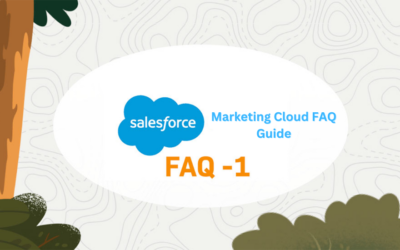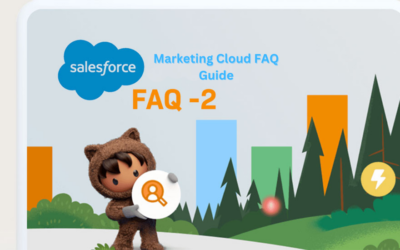In today’s fast-paced business world, nurturing long-term B2B relationships is essential for sustainable growth and success. Companies that invest in cultivating strong connections with their partners, clients, and suppliers often outperform their competitors. One of the key tools for achieving this is Customer Relationship Management (CRM). In this comprehensive guide, we will explore effective B2B CRM strategies that can help your business thrive by fostering lasting relationships.
Moreover, the guide has shed light on the transformative potential of B2B CRM tools like HubSpot. As an influential CRM platform, HubSpot empowers businesses to elevate their CRM strategies, streamline processes, and drive efficient relationship management. By showcasing how HubSpot can be integrated into B2B CRM strategies, this guide has illustrated the practical applications of technology in the realm of relationship building. As the business landscape continues to evolve, embracing and implementing effective B2B CRM strategies, augmented by innovative tools like HubSpot will be the differentiating factor for businesses aiming not only to survive but thrive in the complex world of B2B interactions. If you need assistance with Salesforce CRM setup and optimization, companies like CRM Force can provide valuable expertise and support.
Chapter 1: Understanding the Significance of B2B Relationships
Before we delve into the intricacies of B2B CRM strategies, it is essential to grasp the fundamental importance of these relationships. They serve as the bedrock of stability and predictability in a constantly evolving business landscape. Long-term B2B relationships provide the foundation upon which strategic plans and sustainable growth can be built. Trust emerges as the primary currency of these relationships, and businesses that consistently deliver value foster trust, leading to more productive and enduring partnerships. Moreover, these relationships often evolve into a referral network, where satisfied clients and partners become
enthusiastic advocates, generating organic growth opportunities.
1.1. Stability and Predictability: Long-term B2B relationships provide stability and predictability in a business environment marked by constant change. These relationships form a foundation upon which strategic plans and growth can be built.
1.2. Mutual Trust: Trust is the lifeblood of any B2B relationship. Clients and partners are more likely to collaborate and invest in a company they trust. A history of delivering consistent value fosters this trust.
1.3. Referral and Recommendations: Satisfied clients and partners often become advocates for your brand, referring new business opportunities your way. This organic growth is a testament to the strength of your relationships.
Chapter 2: The Nuances of B2B CRM
In this chapter, we delve deep into understanding the core principles of B2B CRM. At its essence, B2B CRM is a strategic approach centered around understanding, managing, and nurturing relationships with clients, partners, and various stakeholders. It’s not merely about managing data; it’s about sculpting and preserving connections. Data plays a pivotal role in effective CRM. Businesses collect and analyze a wealth of information concerning their B2B relationships, encompassing communication history, purchase patterns, and feedback. This data-driven approach forms the foundation upon which personalized interactions are built. Personalization, driven by insights from data, is a potent tool that helps businesses establish rapport and trust with their B2B partners.
2.1. Defining B2B CRM: At its core, B2B CRM is a strategic approach that revolves around understanding, managing, and nurturing relationships with clients, partners, and various stakeholders. It’s not just about managing data; it’s about building and maintaining connections.
2.2. Data as the Backbone: The foundation of effective CRM is data. Businesses collect and analyze vast amounts of information regarding their B2B relationships, including communication history, purchase patterns, and feedback.
2.3. Personalization and Customization: Utilizing insights gleaned from data, businesses personalize interactions with each B2B partner. This personal touch goes a long way in building rapport and trust.
Chapter 3: The Role of Communication
Effective communication is the lifeblood of B2B CRM strategies. Timely and consistent communication is essential to maintain engagement and foster lasting relationships. Businesses utilize a diverse range of communication channels, from email to phone calls and social media, to ensure they are always in touch with their B2B partners. However, communication goes beyond merely relaying messages; it involves active listening. Genuine interest in the concerns, needs, and feedback of clients and partners is paramount. Establishing robust feedback mechanisms further enhances the effectiveness of CRM strategies. These mechanisms provide insights into how B2B partners perceive a company’s performance, enabling timely adjustments and improvements.
3.1. Timely and Consistent Communication: Effective B2B CRM relies on consistent and timely communication. Various channels, such as email, phone calls, and social media should be used to stay in touch and maintain engagement.
3.2. Active Listening: Demonstrating genuine interest in your clients and partners is crucial. Active listening involves not just hearing but truly understanding their concerns,
needs, and feedback.
3.3. Feedback Loops: Implementing feedback mechanisms is essential. This ensures that you understand how your B2B partners perceive your performance and enables you to make necessary improvements promptly.
Chapter 4: Value Addition through Problem-Solving
Proactive problem-solving stands out as a core principle of successful B2B CRM strategies. This chapter explores the art of identifying issues or challenges that clients and partners may face even before they are aware of them. Such proactive measures demonstrate a company’s commitment to the success of its partners. The importance of tailored solutions cannot be overstated. In a world where one-size-fits-all approaches fall short, businesses that customize their products or services to address the specific needs of each B2B partner not only add value but also establish a unique position in the market. Collaborative problem-solving further solidifies these relationships. By involving B2B partners in finding solutions, companies foster a sense of partnership, which, in turn, leads to shared goals and deeper connections.
4.1. Proactive Problem Identification: Proactively identifying issues or challenges your clients and partners may face showcases your commitment to their success. It’s about being one step ahead and offering solutions.
4.2. Tailored Solutions: One size rarely fits all in B2B relationships. Tailoring your products or services to address the specific needs of each B2B partner not only adds value but also differentiates you from the competition.
4.3. Collaborative Problem-Solving: Involving your B2B partners in finding solutions creates a sense of partnership. Collaborative problem-solving fosters shared goals and deeper connections.
Chapter 5: Measuring and Adapting
To assess the effectiveness of B2B CRM strategies, it is crucial to establish Key Performance Indicators (KPIs) aligned with the objectives. These KPIs may include customer satisfaction scores, customer retention rates, or referral rates. Regular evaluation is essential, ensuring that CRM strategies remain agile and adaptable in response to changing market dynamics and emerging trends. Technology plays a pivotal role in this process, with CRM software streamlining data management, automating processes, and offering insights into B2B relationships. This data-driven decision-making approach empowers companies to make informed adjustments and enhancements to their strategies.
5.1. Key Performance Indicators (KPIs): To gauge the effectiveness of your CRM strategies, establish KPIs that align with your objectives. These might include customer satisfaction scores, customer retention rates, or referral rates.
5.2. Continuous Assessments: Regularly assess the effectiveness of your CRM strategies. Be agile in adapting and refining your approach based on the results and changing market dynamics.
5.3. Technology and Tools: The use of CRM software is invaluable. It streamlines data management automates processes, and provides insights into your B2B relationships, allowing for data-driven decision-making.
Chapter 6: Case Studies – Real-World Success Stories
In this section, we embark on a journey through real-world case studies of businesses that have successfully implemented B2B CRM strategies. These case studies provide tangible examples of how companies have recognized the importance of these strategies and applied them to nurture enduring mutually beneficial relationships. From small enterprises to multinational corporations, these success stories showcase the diverse applications and positive outcomes of B2B CRM practices.
Chapter 7: The Nexus of B2B CRM Strategies and HubSpot
Now, we turn our attention to HubSpot, a leading CRM platform that has revolutionized the way businesses manage their relationships. HubSpot’s suite of tools and features empowers businesses to supercharge their B2B CRM strategies. From robust data management to automation and analytics capabilities, HubSpot offers businesses the means to take their relationship management to new heights. This chapter explores how HubSpot can be integrated into B2B CRM strategies, enhancing their effectiveness and efficiency.
Chapter 8: The Marriage of B2B CRM and Recruitment
Recruitment is a critical aspect of business growth, and it can be transformed through the integration of B2B CRM strategies. By nurturing relationships with potential candidates, recruiters can build a talent pool that not only addresses current needs but also lays the foundation for future success. This chapter delves into the symbiotic relationship between B2B CRM and recruitment, showcasing how these strategies can benefit both HR professionals and businesses seeking top talent. This comprehensive guide provides a detailed exploration of each chapter, shedding light on the significance of B2B CRM strategies, their practical applications, and the tools that can supercharge their effectiveness. In subsequent chapters, we will further dissect the remaining sections of this guide, offering a comprehensive understanding of B2B CRM and its pivotal role in nurturing enduring business relationships.
Conclusion
In the fast-paced, competitive landscape of modern business, cultivating and nurturing lasting B2B relationships are paramount. This comprehensive guide has unraveled the intricate world of B2B CRM (Customer Relationship Management) strategies, emphasizing their indispensable role in sustaining prosperous business partnerships. These strategies encompass a multitude of facets, from understanding the essence of B2B relationships to the art of communication, problem-solving, value addition, and the integration of technology. At its core, B2B CRM is about more than just managing data; it’s about creating meaningful, personalized interactions that foster trust, enhance collaboration, and drive growth. The fundamental principles of trust, stability, and referral networks have been explored in-depth, shedding light on the foundations upon which successful B2B relationships are built. To learn more about how CRM Force can assist you in recruiting top CRM talent and optimizing your CRM strategies for successful drip campaigns, contact us today. Together, let’s maximize your customer engagement. Contact us today.





